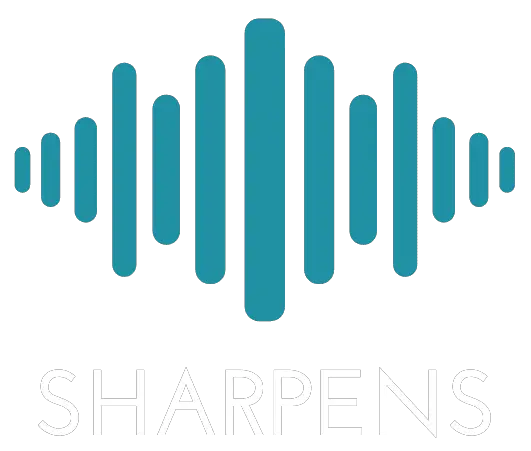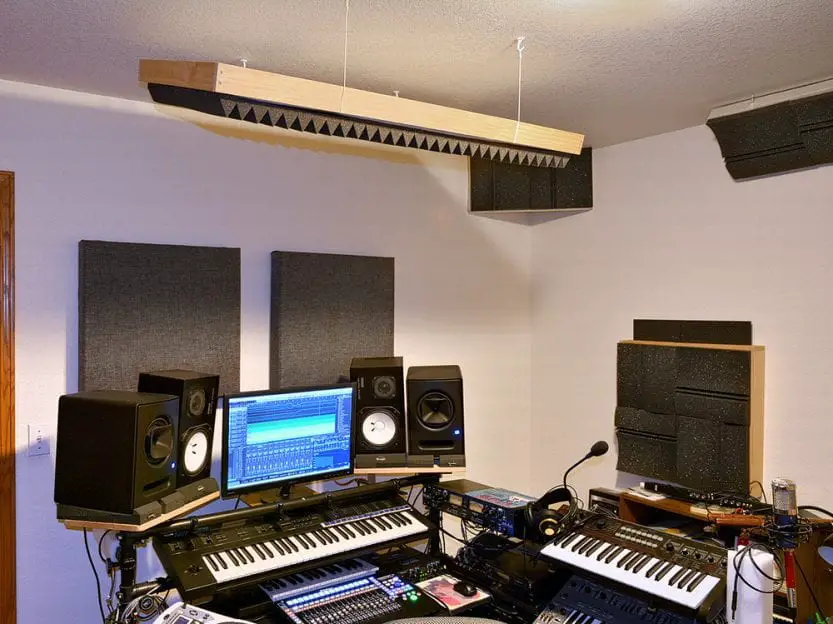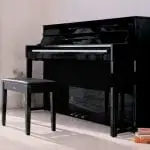Do you want to play music? If you are a musician or an inspiring musician for that matter, you want to keep playing your music, and one of the essential things that you need is a recording studio. The musical magic happens inside the music studio. This is where you put all the pieces together to create a beautiful piece of art. Recording studios are very important for musicians.
What is a recording studio?
The definition of a recording studio is very simple. It is a studio or a room where music and other recordings are made. It has specialized equipment for sound recording, audio production for musical and vocal performances, and mixing other sounds. It is specially designed to achieve optimum acoustic properties.
History of Recording Studios
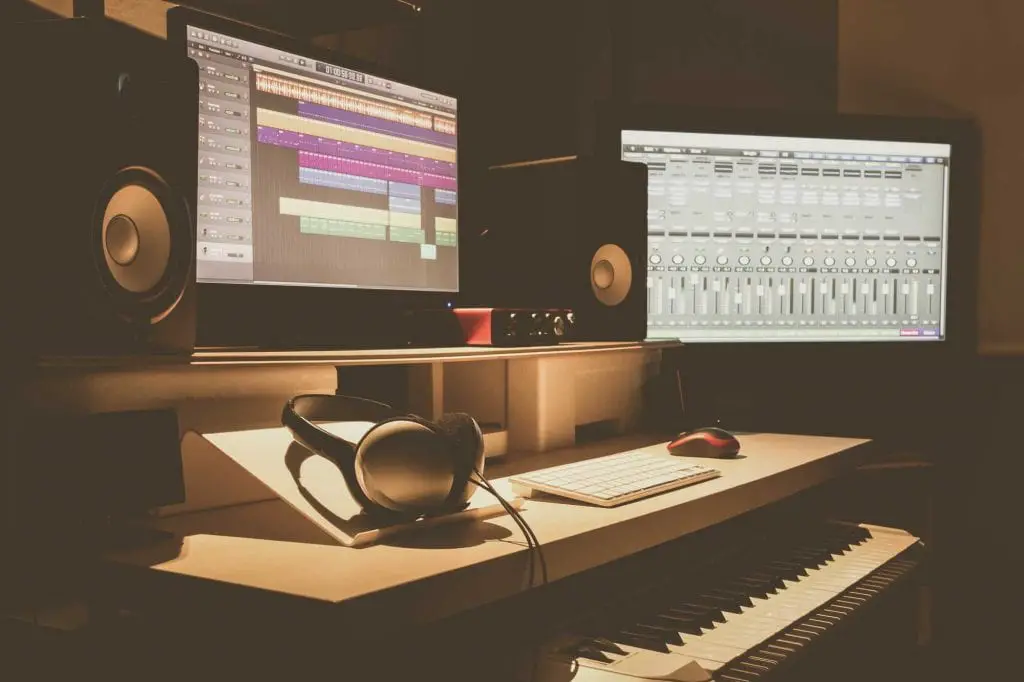
Recording studios existed way back in the early in the late 1800s. The first recording music was inspired when Thomas Edison invited the phonograph to improve the quality of the telephone. It was made of cylinders to create the sound. The cylinders were made of foil, and they were able to produce sounds. It was soon followed by the mass production of recorded discs with the invention of Emile Berliner.
In 1889, boxes that can record sounds were invented, and the first recording studio was established, and it was called New York Phonograph Company. Dame Nellie Melba recorded sessions using a wax drum, which imprinted sound waves and sent it directly to that medium. Since then, recording studios emerged, producing records on wax discs. In the 20th century, Victrola was then replaced by triode, which elevated how recording studios operate.
Soon, electronic recording sessions have been very popular, especially in the West. Electronic music began to dominate and created a massive change in the music industry. It the mid-1900s, musicians have started to use magnetic recording tapes, which allowed them to edited recordings. After the development of this technology, it allowed multi-track recordings, which allowed audio engineers to mix different tracks at different times. The digital age brought recording up to a different level. A lot of things happened since technology has interfered with recording studios.
Are music recording sessions affordable?
Truthfully, recording sessions can be expensive, and they are often perceived as glamorous or comes with a great price. Recording sessions enquires a large amount of work and planning. The people that are involved in a recording session and include setting a budget, creating a schedule, hiring technical people, and, most importantly, finding a recording studio.
Finding a Recording Studio?
So you have that perfect song, and everything is all set the tune, the melody, the musicality, and you are now ready to record it. But where? Where you decide to record your music is a very important matter. Believe it or not, it has an effect on the sound and the whole musicality. In finding the right music studio, make sure to have a comfortable environment, make sure you have a great team, consider your budget, and check the equipment. These factors are very important when looking for a recording studio.
As mentioned earlier, recording sessions can be expensive. You may want to skip the part of renting a recording studio every time you want to make music. You may want to skip the hassle of renting a recording studio during music sessions. You want to skip the hassle of waiting for the availability of the recording session and paying expensive sessions. Practically speaking, you may want to just want to have your own recording studio at home. Is that even possible, or is it going to cost you more?
How much does it cost to build a music studio?
The cost of building a music studio depends on the equipment, location, among others. For a professional recording studio, given the technical and advanced equipment, it may cost $50,000 on up to a few million. On the other hand, a simple project studio or a home studio may cost you around $10,000 – $30,000. Not bad, especially if you get the right stuff and set personalize touches on your home recording studio.
Building a Cheap Home Recording Studio
Building a home recording studio is such a big project, and you want to work in a minimum budget. Is it really possible to build a cheap home recording studio? Fortunately, my friend, the answer is YES. It will take good planning, research, and preparation. Starting your home recording studio is easier when you know what to do.
In building a cheap home recording studio, it should be kept simple. What we mean by cheap is it should be less expensive, not neglecting quality. There are different resources that you can find and use to create a budget-friendly home recording studio. Consider these steps in creating your home recording studio.
1) Choose a good location
A good location in the house should be somewhere that can be private and away from places where most people go to. You may turn a garage or a basement or an attic into a music recording studio. In a normal household, you may need a room or two for the music studio. If you just have one room, make sure that it is big enough to be divided into two. A typical recording studio has two rooms: a studio and the control room.
A studio or a “live rooms” is where you have the microphones and the instruments. It is where the musicians and the vocalist performs. The control room, on the other hand, is where the sound engineers and all the technical stuff operates.
2) Seal the Cracks
The recording studio should be soundproof and should have good acoustic treatment. Soundproofing the recording studio makes the room quieter by blocking out outside noise awhile the acoustic treatment makes the sound better inside the recording by absorbing excessive ambiance. There are 4 methods on how to soundproof your recording room:
- Adding density or mass: Adding mass of density prevents vibration in response to sound energy. You may use materials such as a mass loaded vinyl or sheet block. To measure the effectivity of the materials for soundproofing, it is measured by a metric system known as Sound Transmission Class or (STC). For hard materials, it should have higher STC’s while softer materials like insulations have lower STC’s. STC guidelines are 20-30 poor, 30-40 average, 40-50 good. If you need materials for adding density or mass, you may have a wide variety of materials to choose from. You may choose one that is within the budget but not comprising quality.
- Damping: This is another way of soundproofing. Damping dissipates the kinetic energy from the sound waves converting them to heat. This can be made by putting a Green Glue between two panels. It can be plywood, drywall, or a not so thick fiberboard. It is easy to create a makeshift sound barrier for your studio.
- Decoupling: This is blocking the sound by isolating the sound, usually using a rubber.
- Fill the air gaps: Make sure that all the little cracks and holes in the rooms are sealed up air-tight. There are many tools that you can use, but the most popular ones are Acoustical Caulk, Foam Gaskets, and Automatic Door Bottoms. These are used to seal any cracks.
3) Ventilate and cover
Soundproofing the recording room would also mean that there must be good ventilation. Ventilation allows access to the fresh air outside your home. It is different from air conditioning as air-conditioning cools the air. Studio ventilation may need to be installed by contractors. Since we are working on a budget, you may just build a box out of MDF or Medium Density Fiberboard. Insert in an S-shaped duct to allow the air to flow and then Pad the rest with acoustic foam.
4) Elevate the Floor
Elevating the floors would ensure that any noise or other distracting factors like vibrations will not be able to affect the quality of the recording. In creating an elevated floor in the simplest possible way is to lie woods across foam blocks. The woods should be securely rested on the foam blocks for stability.
5) Diffuse The Sound
To soften the sound, you may add a sofa, pillows, or beanbags to help absorb the sounds. This stuff will help cut down the “echo effect”. You may also need to cover the walls pro-foam which are available in the market of mineral wool isolation
6) Pick Your Recording Software
This will be a very important investment. As we are working on a digital age, it is just right that you select the best possible software that will make recording highly specialized and handy for you. Avoid complications and select software that are easy and to manage yet not compromising the quality of your recorded music. There so much software intended for music recording, but the most popular and commonly used are Cakewalk Sonar and Ableton Live.
Keep in mind that this software should be bought to access certain features. The more money you invest in this software, the more features and flexibility you’ll get. They may be pricey, but do not worry; it’ll give you your money’s worth. Do your homework and research in the best software that you think can help you with your recording session.
7) Install An Audio Interface
Studio interface is important because this is where the “technical stuff” relies on. You need to have a mixer or a soundboard where all equipment and voices are being mixed up, including audio signals. The audio interface is connected to the instruments and microphones on a computer.
Choose and Buy The Right Equipment

Creating or building your own home recording studio can be overwhelming, and it is truly a huge project. It requires financial undertakings and many considerations. Now that the room is all set, what you need now is equipped to get things started. In choosing your equipment, you must keep in mind on how you decide to use your recording studio. Will you need a number of musical instruments, or you just have to keep it small for vocals? You need to incorporate which instruments should function in that studio. Will you need other musical instruments, ho many microphones, a computer, and other equipment.
Keep in mind your budget in shopping for your recording studio. You may need to shop for what you need at the moment and perhaps shop for the other items next time if you need to use such items.
Computer
The digital era has made things easy, and technology has its own magic in creating what has been before impossible. If you have an existing computer, you may use that in writing or editing your audio files. But it is suggested to have a separate computer inside your recording studio. A computer used for mixing or editing audio files may need a higher processor because editing is an extensive process. It is best to have a separate computer for your recording studio. A Mac or a PC will work as your studio computer. Check on your computer system and specification, make sure that it is reliable and built for intensive processes such as editing and mixing.
Microphones
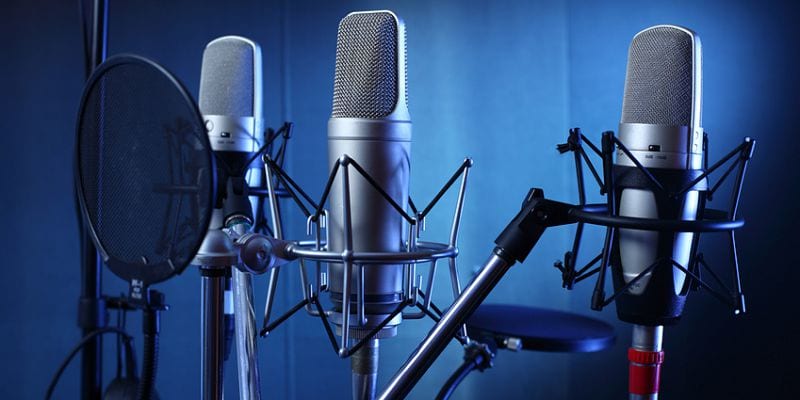
Invest in high-quality microphones. The microphones are used for capturing not only vocals but also sounds from instruments such as drums, electric guitars and etc. A high-quality microphone will be able to pick up sounds with crisp and precision. The number of microphones depends on how you’ll utilize your home recording studio. There are also specialized microphones, especially in vocal recordings. Some microphones, as mentioned, are used for other musical instruments. There are dynamic microphones that are good at recording live sounds or recording instruments like guitars and drums.
Headphones
Headphones are important. This is where you listen for the sound. Headphones should be comfortable and must have accurate frequencies. The headphones are used when recording music tracks. Headphones are crucial in preventing the sound of the original recording from leaking to the microphone. There are two types of headphones: Closed-back headphones and Open back headphones. Closed-back headphones have optimal isolation resulting in lesser sound quality while Open back headphones are used for mixing, and it offers optimal sound quality at the expense of lesser isolation.
Monitor Speakers
These speakers may look like regular speakers, but in recording, they are called or referred to as nearfield monitors or studio monitors. These speakers differ from regular monitors because they have more accurate frequencies compared to the regular ones. These speakers do not boost certain frequencies. Studio monitors are very important equipment that you need to set up in your recording studio.
There are many types and brands of studio monitors that are being sold commercially. Make sure that you don’t compromise the sound quality even though you are working on a tight budget. With such studio monitors under different brands, there should be one that will fit your budget without compromising sound quality and durability. Keep in mind that studio monitors are different from computer speakers. In buying your studio monitor aside from the price, you may also need to consider the shape or the size. Will it fit in your recording studio, or where will you actually place it? Just a tip in buying, a bigger studio monitor reproduces low frequencies better than the smaller ones.
Digital Work Station
DAW is the program that you will be using to record, mix, edit, and master your song or music. This is an integral part of your recording studio. This is where the magic happens. Choosing the right program will depend on your budget, computer specification, and your music. It is important that you have established these factors before buying your DAW. Make sure that it is compatible and would be able to run on your computer. Make sure that you have the right DAW for the type of music that you will be recording though most DAW can work on any genres.
Most importantly, make sure that it fits your budget. Though we suggest, you invest in a trusted and reliable DAW if you want to create good music. Investing in a good DAW could do wonders in your home recording studio. Just don’t forget to check if the DAW will be able to run on your recording computer.
Audio Interface
Once you have selected your DAW, you may proceed with getting your audio interface. An audio interface is a device that will send audio files to your computer when you are recording. It can be a PCI card that can be installed on a computer or a device connected to the computer via USB or Firewire or a combination of both.
Soundcards or audio computer interfaces are already built-in on computers, but they are limited to listening and not technically made for recording. That is the reason why an external audio interface is needed in your home recording studio. In buying an external audio interface, make sure that it is compatible with your DAW. Newer versions of audio interfaces include monitor management, mic preamps, headphone amps, and digital conversions.
Mic stands
Of course, if you have microphones, you will need mic stands. Make sure that your microphones are compatible with your mic stands. These stands come in different shapes and sizes with each designed for a specific task.
Back up drive or an external back-up drive
It is advised to have a dedicated hard drive for your recording sessions where you can store your music. You get a portable hard drive or install another hard drive on your computer. A separate hard drive can also free some spaces on your computer’s internal hard drive.
Audio Cables
Expect a cable loaded to set up as you go through setting up your own home recording studio. Do not compromise on cheap cables. Quality cables will last definitely longer than cheap ones so you will not replace it and avoid the hassle of setting up your cables as well. Cheap cables may also interfere with the noise from external and internal sources. They may break, snap, hiss, hum, create popping sounds, and then hiss. Good cables cancel out noise with its positive signal and an inverted version of the signal.
Pop Filters
This is a net-like material that is placed between the singer’s mouth and the microphone used for recording. It works by catching the blast of the air that is produced when the singer pronounces a “b” and a “p” sound. These microphones are mostly used on ribbon and condenser microphones. In purchasing a pop filter, you need to consider the filtering material. It can be perforated metal, woven nylon filters, or foam. Most pop filters are made of standard woven nylon, while modern pop filters are made of perforated materials or woven.
Miscellaneous music supplies
Just make sure that you have extra things like cables, drum sticks, guitar picks, or things like that or any items that you may need for quick repair jobs.
Building your own home recording studio is not that easy and not that quick as well. It requires planning and a lot of research to be able to come up with the ideal set up that will also work well with your budget. Now you may think that it is easier to just rent a studio every recording station, but perhaps you may need to think again. Having your own recording studio will actually save you time and money.
The investment is long term, and it will save you of the hassle in waiting for the availability of waiting for a studio’s availability in cases that there are a lot of recording sessions. You won’t wait in the queue. You can just record your song at the convenience of your time. It will make making music easier for you.
Along with this equipment, make sure that you have a good team. A good sound engineer, technician, or editor can help you out. Setting up and building a home recording studio may be a lot of work but with a little patience, a lot of planning and researching, you are on your way to having your own recording studio that you can use anytime. So, that’s it! Time to create some music.
